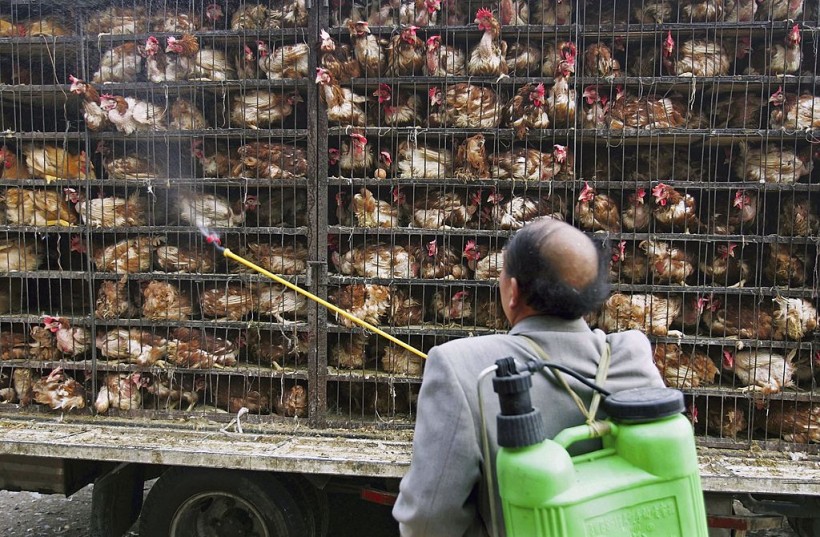The US Department of Agriculture advises hunters, farmers, and anyone else who interacts with birds to be cautious after bird flu was discovered in three ducks in the Carolinas earlier this month.
USDA said multiple cases had been discovered in Canada and Europe in the previous two months. Still, the agency said these latest examples are the first observed in the wild in the United States in five years.
While Eurasian H5 avian influenza (the strain discovered) is not considered a high danger to humans, the USDA warns that the sickness can rapidly impact bird populations.

XINING, CHINA - MAY 4: (CHINA OUT) A worker disinfected chickens transported to a chicken slaughtering factory on May 4, 2006, in Xining of Qinghai Province, China. Surveillance has been stepped up in Qinghai Province after discovering a dead wild goose carrying the bird flu virus in Gangcha County. The Ministry of Agriculture said on April 30 that the dead bar-headed goose found in the county tested positive for the H5N1 strain, the highly contagious strain that has killed 12 people in China. Qinghai is a stopping point for migrating birds, and the virus killed thousands of bar-headed geese at a nature reserve in the region in 2005, according to state media.
Bird Flu Returns to the US After 5 Years
According to the USDA, the same form of flu destroyed the US turkey business in 2015, killing more than 50 million birds in the "most significant animal health illness occurrence" in the country's history.
For years, avian flu has been a potential infection. In the early 2000s, it drew a lot of media attention.
In reality, the H5N1 virus was found in Germany, Egypt, and Nigeria in 2006. A pandemic appeared to be a possibility. Utah officials have even planned what to do if a pandemic breaks out.
However, according to The Associated Press, the virus's rate of human-to-human transmission has dropped.
According to Fox8, infected birds may not display signs right away. Still, symptoms to watch for include trouble breathing, purple coloring on legs, and a drop in egg production.
To help restrict the spread of the disease, the Centers for Disease Control and Prevention (CDC) recommends that anybody handling birds wear gloves and work outside. Before consuming eggs or chicken that have been cooked at home, ensure sure the interior temperature reaches 165 degrees.
Not The Only Bird Flu Recorded
According to the CDC, there are several avian influenza strains, the majority of which are identified by the letters "H" and "N" in their titles. These letters distinguish avian influenza strains by representing the virus's hemagglutinin and neuraminidase proteins.
For example, Deseret News reported in June 2021 that a Chinese male had contracted H10N3 bird influenza, which was widely regarded as the first human case.
Chinese authorities claimed in a statement obtained by The Associated Press at the time that the infection was caused by an unintentional cross-species transfer. Large-scale transmission poses a modest danger.
According to Wired, it is far too early to determine if the presence of this virus in the United States is a blip, an impending threat to agriculture, or a zoonotic pathogen exploring for a way to attack people. However, it serves as a warning that COVID-19 isn't the only illness with pandemic potential and that it's all too easy to lose sight of other potential threats.
RELATED ARTICLE: Burkina Faso Bird Flu Outbreak: 500,000 Chickens Die Due to H1N1 Strain
Check out more news and information on Medicine and Health in Science Times.














